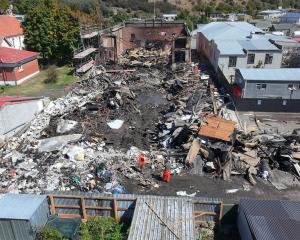
But board members have told Otago Regional Council staff that Teviot Valley residents want more action from both the council and NZ Transport Agency, and are frustrated by how long it is taking to get flood prevention work done.
However, agency senior network manager John Jarvis said investigations and planning were being done as quickly as possible, and solutions were more complex than simply clearing and replacing culverts.
"It's all about what's up in the hills . . . I think if people were aware of what was up in the hills behind them [above Roxburgh] that would be useful, to give an idea of how big the problem is."
Two regional council staff members gave a presentation to community board members this week about options for flood protection work outlined in a draft report done by an engineering firm. The report will be discussed by regional councillors within several weeks.
Council natural hazard analyst Ben Mackey said there was "no quick fix" or "silver bullet" to flood mitigation work needed after the severe Teviot Valley flooding of November 2017 and flooding in November 2018.
There was also no estimate of costs for the work, although they would be expensive. For example, raising the walls of the flume (water channel) along Reservoir Creek could cost up to $200,000, Mr Mackey said.
Some of the recommendations in the report were sedimentation clearing, replacing under-sized culverts, building flood barriers and using mesh structures further up in the catchment to capture boulders.
Board members questioned why it had taken 18 months for the report to be done, how the work would be funded and why some of the "easier" solutions could not be put in place soon.
Board chairman Raymond Gunn also said it seemed the transport agency had "not been very co-operative" or "in much of a hurry" to do things such as replace under-sized culverts.
Mr Jarvis rejected that, saying the agency had done clearing and maintenance work already and worked closely with the regional council since the November 2017 flooding, and was communicating with the district council and committed to finding joint solutions.
National agency funding had just been approved to do detailed investigation and design work for potential solutions, Mr Jarvis said.
He expected agencies would fund their respective responsibilities, for example the agency funding culvert work and the regional council any stabilisation work further up in the catchment.












